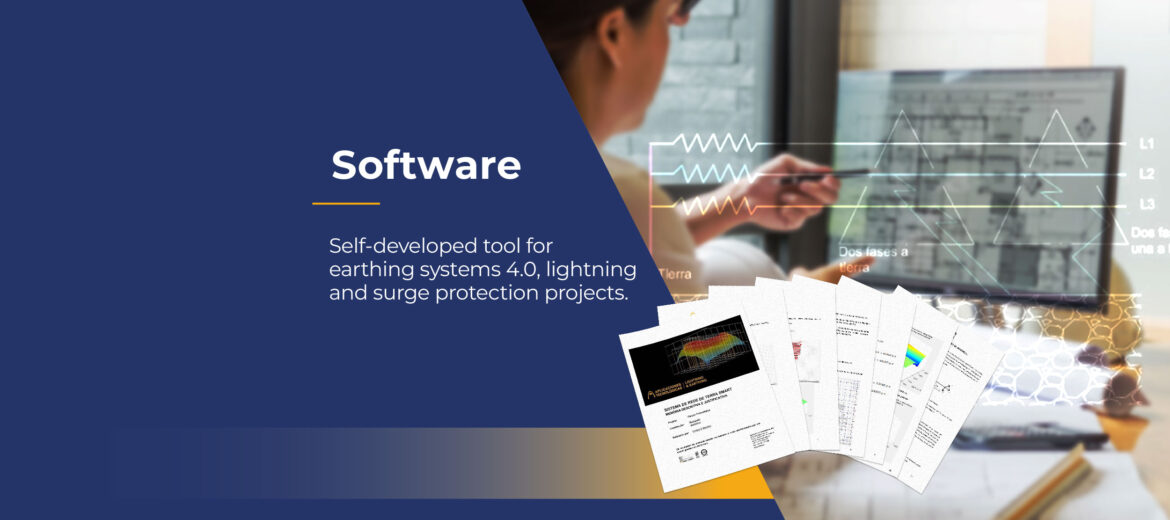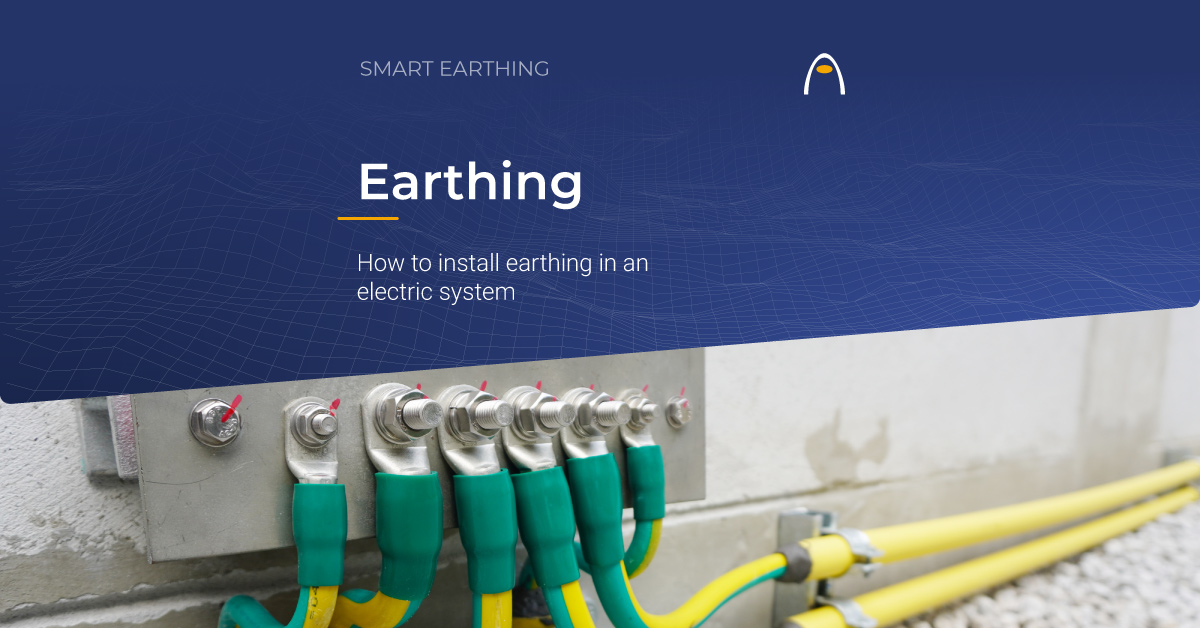Aplicaciones Tecnológicas S.A. has developed a piece of software with advanced functionalities for the design and analysis of earthing systems 4.0 and lightning protection systems. This software is the one we use within our expert services for earthing systems 4.0 and lightning and surge protection projects. One of its most innovative aspects is the analysis of the combined interaction of grounding and surge protection in a building.
Our R&D centre, AT Research Center, channels the powerful investment in R&D of Aplicaciones Tecnológicas S.A. In addition to the best-equipped laboratory in Europe, we have a department dedicated to modelling and analysis. This department is dedicated to obtaining numerical and physical models, multidimensional characterisation, data analysis and interpretation and the development of multiplatform software applications.
In our research centre, we investigate the physical phenomena that describe the interactions and processes observed in specialised laboratories and test fields under natural conditions. These studies allow us to establish numerical models to simulate the behaviour of systems.
Numerical modelling underpins the development of proprietary cross-platform software applications that we offer through the various Smart Earthing and Smart Lightning services. In this way, we transform what could only be a product into a value-added service for users, as we provide them with the experience and knowledge of our multidisciplinary team of experts.
Among the advanced tools that the modelling and analysis department has designed is software for the design and analysis of grounding systems and lightning protection systems. This software is under continuous development, incorporating more and more advanced functionalities to visually project and evaluate the effectiveness of the installations.
Earthing 4.0 projects and lightning protection projects with advanced software
Earthing 4.0 project service uses the software to create and analyse designs based on international standards and projects them with the optimum solution. Based on ground dimensions, geo-electrical data, target resistance, etc., it provides the calculation of the earthing resistance and verification of compliance with maximum permissible step and touch voltages.
At Aplicaciones Tecnológicas S.A. we are committed to digitalisation, connectivity, data science and artificial intelligence. For this reason, we have specialised in design projects for the monitoring of earthing systems using the Smart Earthing Monitoring System. In connection with this 4.0 approach, the software determines the number of sensors at selected control points necessary to ensure centralised monitoring of the earthing installation.
In addition, the software enables more complex studies related to lightning protection systems (SPCR) within the Aplicaciones Tecnológicas service for lightning and surge protection projects:
- Calculation of the short-circuit current to earth. Approximate calculation of the short-circuit current, starting from some data of the power system and the transformer of the installation where the earthing system is to be designed.
- Lightning strike transient analysis. Evaluation of the behaviour of the earthing system when a lightning current of any magnitude penetrates the system, front time and tail time. The software makes it possible to observe the potential variation at each node of the system over time and the current dissipated by each electrode. With this, it determines the impulse impedance of the system and its efficiency against this type of current. The efficiency of the system is a measure of the efficiency of the grounding system to dissipate the lightning current.
- Short-circuit transient analysis. Evaluation of the distribution of electrical current, when a short-circuit to earth, occurs in the installation (single-phase, two-phase or three-phase), making it possible to determine over time the voltages generated at each node of the earthing system and the currents drained by each electrode of the same. This analysis makes it possible to know the voltage and current values in the first moments of the short-circuit where these parameters reach extremely high magnitudes.
- Frequency analysis. Determination of the variation of impulse impedance and system efficiency for a specified frequency range. Frequency is one of the parameters that most affect the transient behaviour of grounding systems.
- Interaction analysis between grounding grids. Determination of the step and touch voltages across the length and width of the meshes involved. When there are independent meshes (not electrically connected) but close to each other, the injection of current into one of them may cause overvoltages in the neighbouring meshes, which may be higher than the step and touch voltages tolerable by human beings.
- Technical and economic optimisation of the earth mesh. Determination of a new mesh from another uniform grid, where the conductor length, burial depth and earth movement are optimised, guaranteeing compliance with the resistance parameters and step and touch voltages established by the regulations.
Design and evaluation of surge protection with own software
However, one of the most novel aspects of the software concerns the analysis of the combined interaction of earthing and surge protection of a building. The effectiveness of the surge protection of a building depends to a large extent not only on the proper selection of surge suppressors but also on their proper connection to the earthing system. By assessing the interaction of these two systems, it is possible to determine whether the surge voltage levels in the equipment to be protected are lower than they are designed to withstand.
Starting from the grounding and external and internal protection projects of the building, the software creates a model of the entire SPCR (lightning rods, down conductors and DPS) and the earthing system. This makes it possible to determine whether the lightning protection system is functioning properly, both for direct lightning strikes to the building and for direct strikes to the power lines or earth in the vicinity of the building. The software provides graphs of the current flowing in the down conductors, the potentials generated in the entire earthing system, as well as the potentials between phases, between phase and neutral and between phase and protective cable, at the terminals of the equipment to be protected. After the analysis, it is determined whether the protection is adequate and, if it is not, it is possible to propose the necessary changes to make it so.
At Aplicaciones Tecnológicas S.A. we develop advanced tools that we make available to customers through our Smart Earthing and Smart Lightning services to optimise grounding systems and SPCRs in technical and economic terms. Suppose you need more information about the modelling and analysis carried out at the AT Research Center from which software for projecting and redesigning is derived. In that case, you can contact our multidisciplinary team of experts at the following link.



